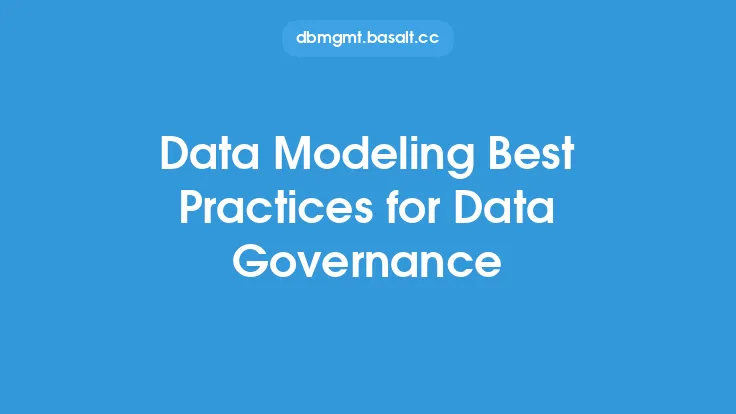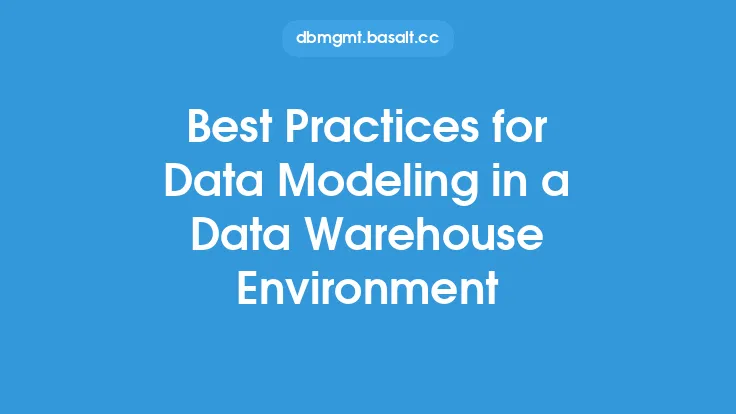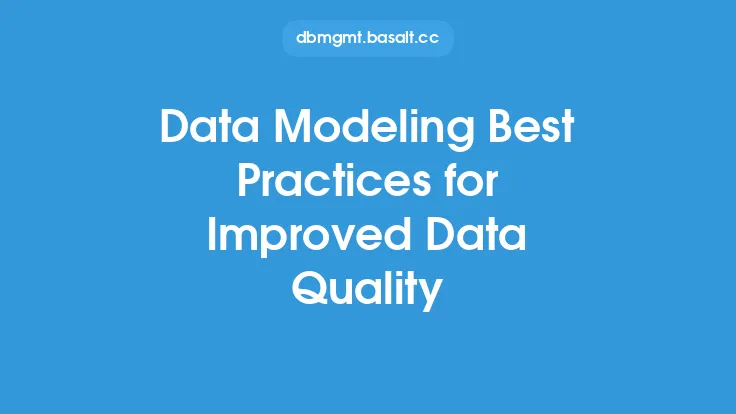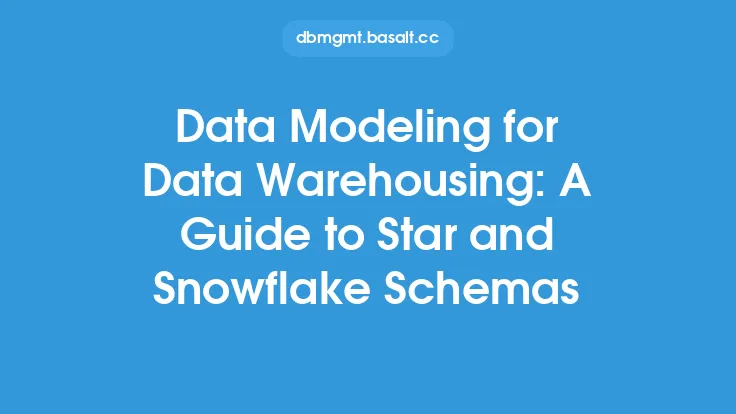When designing a data model, scalability and flexibility are crucial considerations to ensure that the model can adapt to changing business needs and growing amounts of data. A well-designed data model should be able to handle increased data volume, user traffic, and query complexity without compromising performance. In this article, we will discuss the best practices for data modeling that focus on scalability and flexibility, providing a solid foundation for building robust and adaptable data systems.
Understanding Scalability and Flexibility in Data Modeling
Scalability and flexibility are closely related concepts in data modeling. Scalability refers to the ability of a data model to handle increased data volume, user traffic, and query complexity without compromising performance. Flexibility, on the other hand, refers to the ability of a data model to adapt to changing business needs and requirements. A flexible data model can accommodate new data sources, changed data structures, and evolving business rules without requiring significant redesign or reimplementation. To achieve scalability and flexibility, data modelers should focus on designing data models that are modular, extensible, and easy to maintain.
Designing for Scalability
To design a scalable data model, data modelers should consider the following best practices:
- Use a modular design: Break down the data model into smaller, independent modules that can be developed, tested, and maintained separately. This approach allows for easier scalability and reduces the risk of cascading changes.
- Use a normalized data structure: Normalize the data structure to minimize data redundancy and improve data integrity. Normalization also helps to reduce the amount of data that needs to be stored and processed, making it easier to scale.
- Use indexing and partitioning: Use indexing and partitioning techniques to improve query performance and reduce the amount of data that needs to be processed. Indexing can help to speed up query execution, while partitioning can help to reduce the amount of data that needs to be scanned.
- Use a distributed architecture: Consider using a distributed architecture to spread the data and workload across multiple servers or nodes. This approach can help to improve scalability and availability, as well as reduce the risk of single-point failures.
Designing for Flexibility
To design a flexible data model, data modelers should consider the following best practices:
- Use a data-driven design: Focus on the data itself, rather than the application or use case. This approach helps to ensure that the data model is flexible and adaptable to changing business needs.
- Use a metadata-driven approach: Use metadata to describe the data structure and relationships, rather than hard-coding them into the data model. This approach allows for easier changes and extensions to the data model.
- Use a flexible data structure: Use a flexible data structure, such as a graph or document-oriented database, to accommodate changing data structures and relationships.
- Use a service-oriented architecture: Consider using a service-oriented architecture to provide a layer of abstraction between the data model and the application or use case. This approach helps to decouple the data model from the application and allows for easier changes and extensions.
Using Data Modeling Techniques for Scalability and Flexibility
Several data modeling techniques can help to improve scalability and flexibility, including:
- Entity-relationship modeling: Use entity-relationship modeling to identify and describe the key entities and relationships in the data model. This approach helps to ensure that the data model is well-structured and easy to maintain.
- Object-role modeling: Use object-role modeling to describe the relationships between objects and roles in the data model. This approach helps to ensure that the data model is flexible and adaptable to changing business needs.
- Dimensional modeling: Use dimensional modeling to design a data model that is optimized for query performance and scalability. This approach helps to ensure that the data model is well-structured and easy to maintain.
Implementing Scalability and Flexibility in Data Modeling Tools
Several data modeling tools and technologies can help to implement scalability and flexibility, including:
- Data modeling software: Use data modeling software, such as Entity-Relationship Diagram (ERD) tools or Object-Role Modeling (ORM) tools, to design and implement scalable and flexible data models.
- NoSQL databases: Consider using NoSQL databases, such as graph or document-oriented databases, to implement flexible and scalable data models.
- Cloud-based data platforms: Use cloud-based data platforms, such as Amazon Web Services (AWS) or Microsoft Azure, to implement scalable and flexible data models. These platforms provide a range of tools and services that can help to improve scalability and flexibility, including data warehousing, data lakes, and data integration.
Conclusion
Scalability and flexibility are critical considerations in data modeling, as they help to ensure that the data model can adapt to changing business needs and growing amounts of data. By following best practices, such as using a modular design, normalized data structure, and flexible data structure, data modelers can design scalable and flexible data models that meet the needs of the business. Additionally, using data modeling techniques, such as entity-relationship modeling and dimensional modeling, and implementing scalability and flexibility in data modeling tools and technologies, can help to ensure that the data model is well-structured, easy to maintain, and adaptable to changing business needs.





